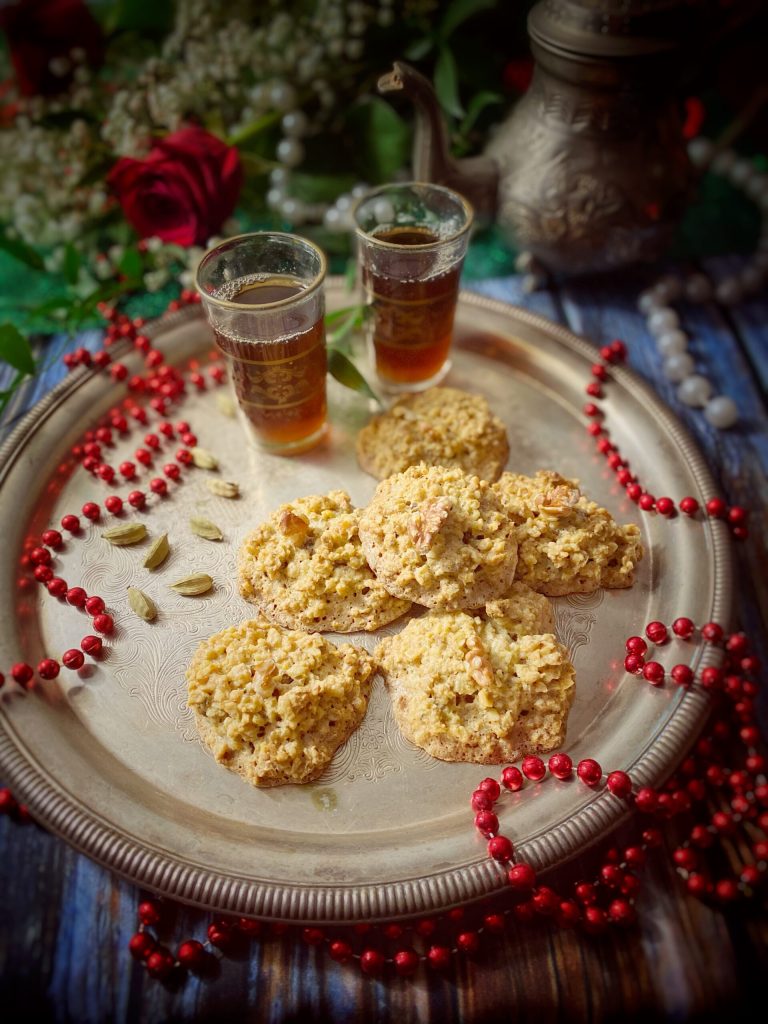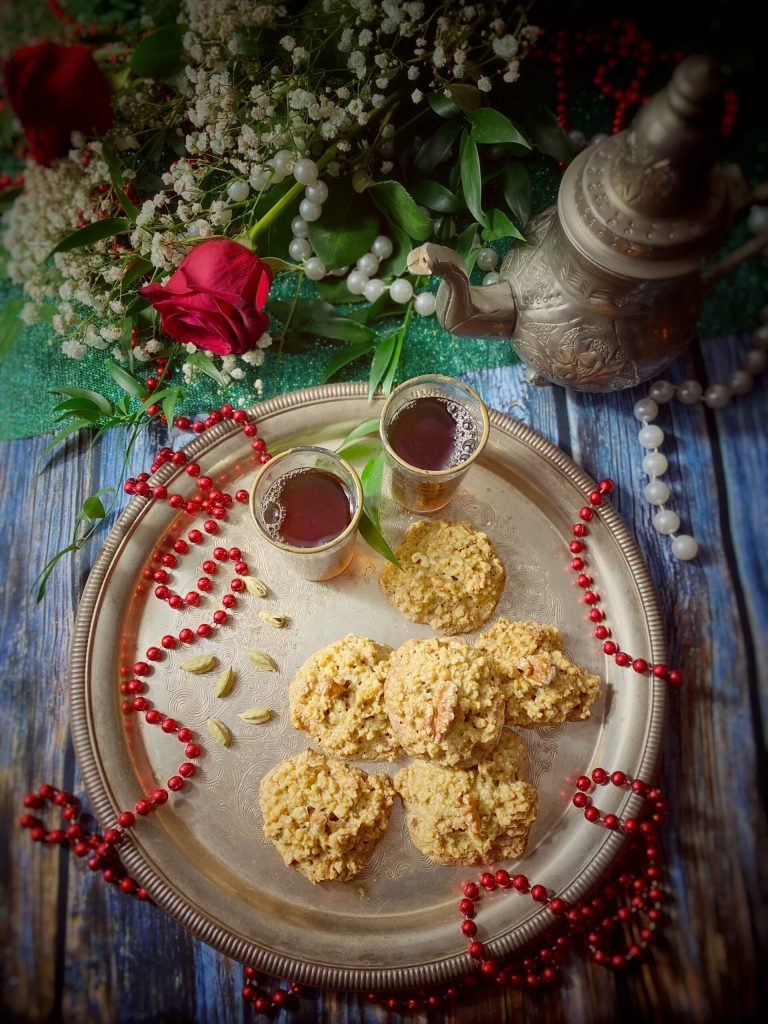Naan-e gerdui or naan-e gerdooi, literally “walnut bread”, are Persian gluten-free walnut cookies, made with ground walnuts and powdered sugar.
Persian sweet cookies can be classified into dry cookies (shirini khoshk) and moist cookies (shirini tar) and naan-e gerdui belong to the former type.
According to legend, King Jamshid discovered sugar during the Persian New Year, the Nowruz.
Therefore, there is a tradition to celebrate Nowruz with seven sweet foods, in addition to the other seven traditional elements of the Haft-sin.
Seven sweets:
• Noghl, sugar-coated almonds flavored with rose water
• Persian Baklava, pistachio almond pastry
• Nan-e berenji, rice cookies
• Nan-e badami, almond cookies
• Nan-e nokhodchi, chickpea cookies
• Sohan asali, honey almonds
• Nan-e gerdui, walnut cookies
An important part of Nowruz celebrations is setting up the Haft-Seen table, a table decorated with symbolic objects representing spring, new beginnings, hope, and much more.
For Afghanistan, the typical Nowruz cookies made with rice flour and pistachios are:

- Difficulty: Very easy
- Cost: Cheap
- Preparation time: 5 Minutes
- Portions: 12 cookies
- Cooking methods: Oven
- Cuisine: Middle Eastern
- Seasonality: All seasons
Ingredients
- 7 oz walnuts (+ 12 halves for decoration)
- 4 egg yolks
- 3/4 cup gluten-free powdered sugar
- 1 teaspoon rose water (or vanilla extract)
- 3 pods cardamom
Steps
Coarsely blend the walnuts.
Beat the egg yolks with the powdered sugar, then add the rose water (or vanilla extract) and crushed cardamom, and finally the walnuts.
With the help of a spoon, form a cookie on a baking sheet lined with parchment paper. Decorate each cookie with a walnut half.
Bake in a static oven at 300°F for 20 minutes.

Tea in Iran:
Tea arrived in Persia via the Silk Road from India and quickly became the national drink.
Iranians have one of the highest per capita tea consumption rates in the world; and since ancient times, every street has its own châikhâne (tea house).
Tea houses still play an important social role. Iranians traditionally drink tea by pouring it into a saucer and placing a piece of rock sugar (qand) in their mouth before drinking it.
Sugar cubes are a symbol. A sweetening symbol. It is said that in Iran, rubbing it by hand on the head of the groom and bride and placing it on the shelf will bring good luck.
In the province of Gilan, in the foothills of the Alborz, there are vast tea-growing areas and millions of people work in the tea industry. This region covers a large part of Iran’s tea needs.
FAQ (Frequently Asked Questions)
What is Nowruz?
Nowruz is a significant New Year festival in Afghanistan, Iran, and throughout Central Asia.
The festival coincides with the spring equinox in March and, just like the complete cycle of the seasons, it symbolizes rebirth.
Predating Islam, Nowruz is an ancient celebration with roots in Zoroastrianism, whose spiritual homeland is said to be Balkh, in Afghanistan.
The color associated with Nowruz is green, reflecting the Zoroastrian tradition of marking the spring equinox and celebrating the new life it brings.

